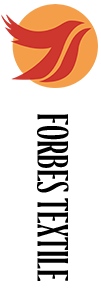24
2023
-
08
What are the methods of clothing fabric reconstruction?
Fabric and design complement each other. Clothing fabrics have gone from hides and leaves to all kinds of new fiber fabrics. Fabric reengineering is the secondary design of fabrics, which is a kind of creativity, an art and an extension of designers' thoughts.
Step 1 connect
Connection is a common redesign technique for fabrics as surface materials. Connection method can be divided into sewing and pasting.
Step 2 cut and paste
Clipping is a method of directly cutting the required shape on the fabric with scissors or cutting it and then making the shape through sewing and patching. Clipping includes sewing, patching, cutting, etc.
Step 3 rub
Rub-in is a common design method for linear materials. Most of the rub-in is formed by twisting with two hands, and sometimes thicker wires are shaped or braided with tools such as spindles.
Step 4 hollow out
Openwork includes engraving, engraving, hollowing out coil lines, engraving, etc.
Step 5 embellish
Ornament is the design of adding some shapes to clothing.
Step 6 pleat
The pleating brings subtle dynamic and three-dimensional decorative effects through the twists and turns of the fabric. The pleating techniques include pleating, pleating, pinching, twisting, wavy lace, stacking and layering.
Step 7 draw yarn
Drawing refers to drawing the warp or weft of the fabric. Sometimes the warp or weft of the fabric is the same color, and sometimes it is different color. After drawing, the fabric will have the feeling of alternating between reality and color, and sometimes it will reveal the skin color or clothing color inside, which enhances the layering of the clothing.
8. Stamping
Imprinting refers to pressing the required patterns and patterns on the fabric through a special process. Usually, the pressed parts are concave, and the parts that have not been embossed are convex, which forms a good texture effect on the fabric.
9. Twist
Twisting refers to the method of using the plasticity of soft fabric to stretch and turn the fabric by rubbing, rubbing and twisting, so as to form a certain texture effect on the surface of the fabric.
10. ink painting
Ink-jet printing is a method of spraying the blended pigment on the surface of fabric by using tools such as pen or spray gun.
11. Tie the knot
Tie-knot is to put fillers such as beads, buttons, cotton balls or acrylic cotton under a soft fabric, and then tie them on the front of the fabric, or tie them directly on the surface of the fabric.
12. Be old
To do the old is to use water washing, sand washing, rinsing, dyeing, tearing and scraping to treat the fabric, so that the fabric presents an old feeling.
13. Stacking
Stacking refers to the stacking of clothing fabrics or other materials layer by layer according to the design requirements.
14. Embroidery
Embroidery is the most traditional way to decorate clothing fabrics. The stitches of the embroidery thread and the raised patterns make the pattern have a unique sculptural beauty of relief. Embroidery includes manual embroidery and computer embroidery.
Step 15 knit
Knitting mainly refers to winding linear materials by hand or knitting wool, silk thread, yarn, etc. with stick needles and crochet needles. The patterns and patterns of knitting are very varied.
16. Knot embroidery
China's traditional knot embroidery, also known as cloth relief, is called smocking in the west, which is a three-dimensional structure and a unique joint structure.
Related information

